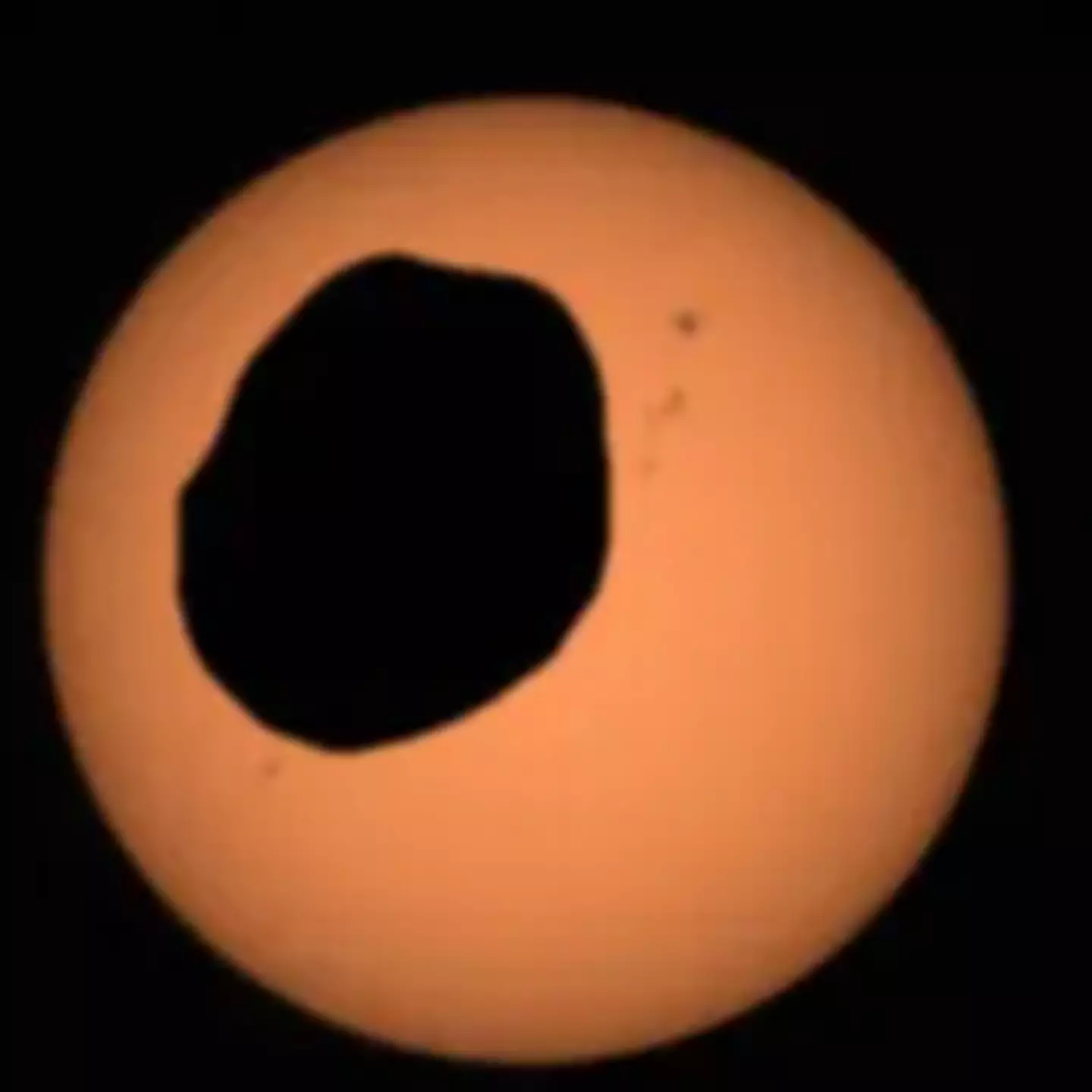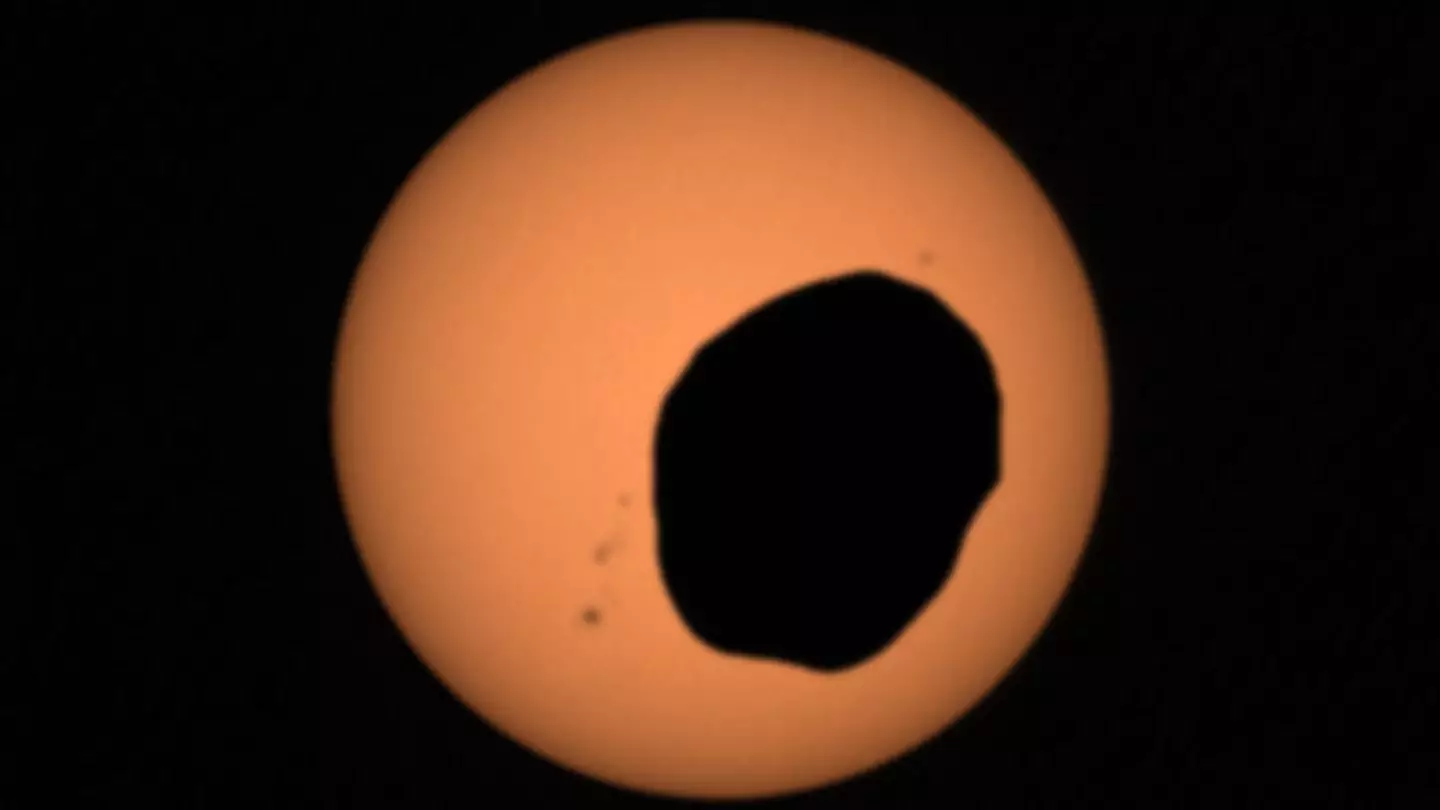
The total solar eclipse enjoyed by millions of observers earlier this week has unsurprisingly fuelled a surge of interest in all things solar.
Well, it turns out that NASA was ahead of the curve, exactly as you'd imagine, because earlier this year it released some pretty staggering footage and images of a very different type of solar eclipse - one on Mars.
Its Perseverance Rover continues to trundle around that planet's surface taking samples and recording valuable data to beam back home, and it managed to capture a rare sight in February.
Mars has a moon of its own called Phobos, although, unlike our spherical and almost elegant moon, it's quite misshapen and lumpy. It's been widely compared to a potato with good reason, and it's also tiny compared to our own moon.
Advert
Whereas ours is some 2,100 miles from one side to the other, Phobos is just 13.8 miles wide by contrast, so it's almost a speck.
Still, that doesn't mean it doesn't look impressive when it passes in front of the Sun from the perspective down on the ground on Mars, and Perseverance managed to take 68 images of the eclipse on 8 February to showcase this.
Stitched together to form a video, it looks really amazing, and did get some attention on social media in February.
Advert
Advert
It's a really impressive bit of field photography, all the more so since it was captured from a rover, using the Perseverance's Mastcam-Z camera in the space of around a minute.
The amount of detail is also really great, as commented on by Mark Lemmon, an astronomer with the Space Science Institute in Boulder, Colorado. He pointed out to Metro UK: "You can see details in the shape of Phobos’s shadow, like ridges and bumps on the moon’s landscape. You can also see sunspots. And it’s cool that you can see this eclipse exactly as the Rover saw it from Mars."
That last point is key, of course - no human eye is likely to see this eclipse for some time, even if manned missions to Mars are finally on the horizon for the first time.
Advert

By contrast, people around the world have been looking forward to when their next chance to see a total solar eclipse will roll around. One will pass over parts of Northern Europe (and a little bit of Portugal and Spain) in 2026, which means that some people are already making plans.
After all, it's clear that this week's eclipse was jaw-dropping, but some people travelled a long way to see it only to be greeted by blankets of cloud that spoil the effect somewhat.
